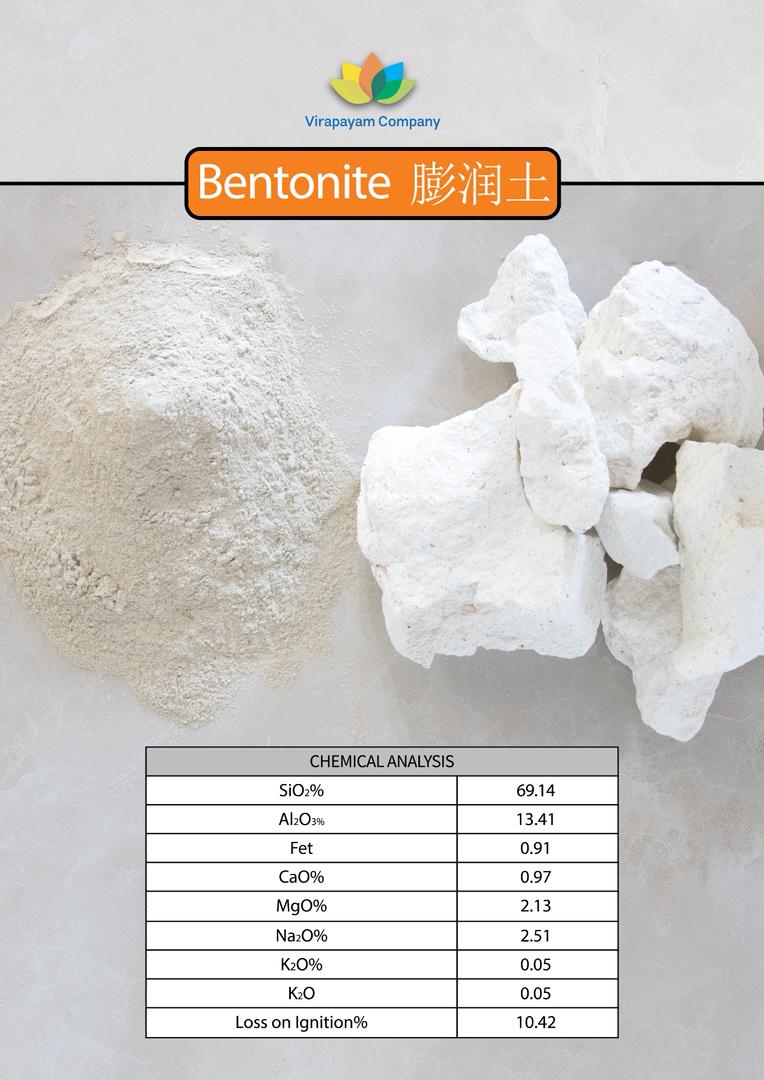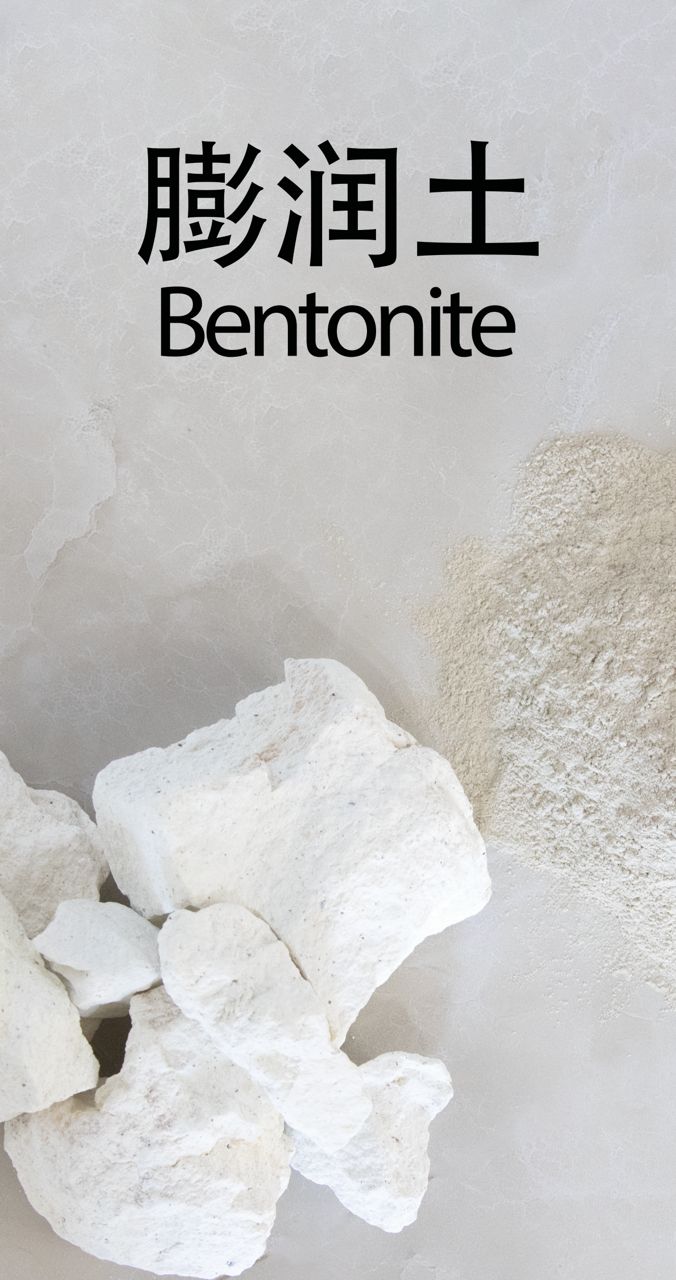
🔥 BENTONITE — The Earth’s Shape-Shifter Beneath the Surface!Born from ancient volcanic ashes and sculpted by
nature’s slow alchemy, Bentonite is not just a clay—it’s a geological phenomenon. With its fine-grained elegance and transformative structure, bentonite stands out in the world of natural minerals. Here's a deep and compelling look into Bentonite as a naturally occurring clay mineral—from its genesis to its defining physical traits and global distribution.
📌 Basic Identification
Name: Bentonite
Chemical Formula: (Na,Ca)₀.₃₃(Al,Mg)₂Si₄O₁₀(OH)₂·nH₂O
Mineral Group: Smectite (part of the phyllosilicates)
Crystal System: Monoclinic (but often appears as amorphous or microcrystalline masses)
Mohs Hardness: ~1 – 2
Specific Gravity: ~2.3 – 2.7 g/cm³
Luster: Earthy to dull
Transparency: Opaque
Streak: White to pale grey
Cleavage: Perfect basal (microscopic)
Fracture: Uneven to earthy
Color: Cream, grey, greenish, yellowish, or light brown depending on impurities
🌍 Geological Formation and Origin
Bentonite forms from the weathering and alteration of volcanic ash, especially in marine or lacustrine environments. This transformation occurs over millions of years, where ash interacts with groundwater, gradually morphing into the smectite clay mineral montmorillonite, the primary constituent of bentonite.
🧬 Modes of Formation:
Volcanic Origin: Deposits are often associated with ash layers in sedimentary basins.
Hydrothermal Alteration: Sometimes forms near geothermal systems or in contact zones.
Diagenetic Processes: Transformation under low-grade metamorphic or burial conditions.
🔗 Commonly Associated With:
Zeolites
Gypsum
Pyrite
Feldspars
Volcanic tuff and pumice layers
🌎 Global Occurrence and Deposits
Bentonite is found globally, especially in regions with ancient volcanic activity and sedimentary basins. Major sources include:
United States: Wyoming (the world’s largest and most renowned deposit), Montana, South Dakota
Iran: Particularly in Khorasan, Semnan, and Kerman provinces
Turkey: Central Anatolia and Thrace
China: Xinjiang and Inner Mongolia
India: Rajasthan and Gujarat
Italy: Sardinia and the Campanian region
Mexico, Brazil, Greece, Germany, and Russia also host significant reserves
🗺 In these areas, bentonite typically appears as:
Layered clay beds
Lenticular or irregular seams in sedimentary strata
Interbedded with volcanic tuffs and shales
🔬 Mineralogical and Physical Characteristics
Texture and Feel
Bentonite has a soft, fine-grained texture. When moistened, it swells dramatically, forming a sticky, pliable mass. Its touch is unmistakably smooth and silky.
Color Variations
Color depends on the presence of impurities such as iron oxides, carbonates, and organic matter—ranging from white and grey to olive green and pale brown.
Swelling Capacity
Sodium bentonite, in particular, exhibits extraordinary swelling properties—absorbing several times its weight in water. This trait is one of its most unique identifiers.
Structure
Made of stacked layers of silicate sheets, bentonite has an expandable interlayer space that holds water and cations, making it incredibly reactive and flexible in structure.
🧪 Chemical Properties and Stability
Rich in aluminum and silicon, with variable amounts of sodium, calcium, and magnesium.
Highly reactive with water, undergoing gel formation in hydrated environments.
Chemically stable under ambient conditions but alters with heat or acidic exposure.
🧭 Environmental and Geological Significance
Paleogeographic Indicators: Points to past volcanic activity and depositional environments.
Soil and Sediment Studies: Used to reconstruct diagenetic histories of basins.
Mineralogical Transition Zones: Highlights the progression from volcanic ash to clay through natural geochemical cycles.
🛑 Handling and Preservation
Due to its high absorbency and tendency to swell, bentonite requires careful handling in raw form:
Keep in a dry, sealed environment to avoid premature hydration
Store in airtight containers to prevent contamination or dusting
Avoid exposure to high humidity or sudden temperature shifts
✅ Summary
Bentonite is the earth’s quiet transformer—born of volcanic fury, tempered by water, and sculpted by time. Its mineralogical complexity and geologic narrative make it a true marvel in sedimentary environments. Soft in hand, yet powerful in structure, bentonite bridges the worlds of fire and clay, embodying transformation in its very essence.

